


ISIDORE STRING QUARTET WITH PIANIST JEREMY DENK
TUESDAY, MARCH 4























































ISIDORE STRING QUARTET WITH PIANIST JEREMY DENK
TUESDAY, MARCH 4



















































At Tuesday Musical, we treat you to the thrill of discovery with carefully curated musical experiences you won’t find anywhere else. Superstars and hidden gems. The classics and redefined genres. Special programs that connect you with the musicians and their inspirations.
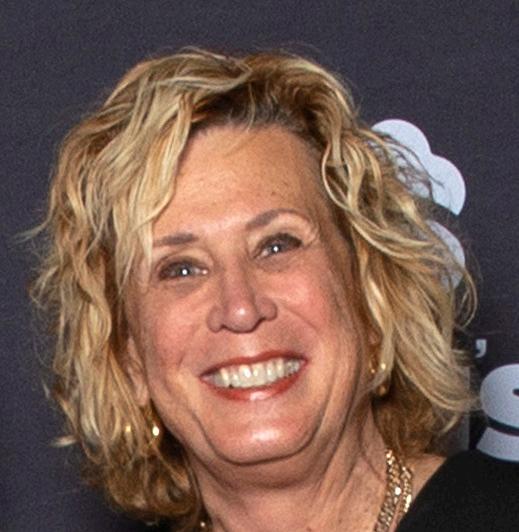
Tuesday Musical’s Akron Concert Series promises artful, entertaining and engaging opportunities with every concert. We are thrilled that you are here to enjoy them with us!

Cynthia Snider Executive Director
Details and tickets at tuesdaymusical.org and 330.761.3460.
Be kind to the patrons around you — and to this evening’s musicians. Please silence your cell phones and limit the taking of photos and videos.
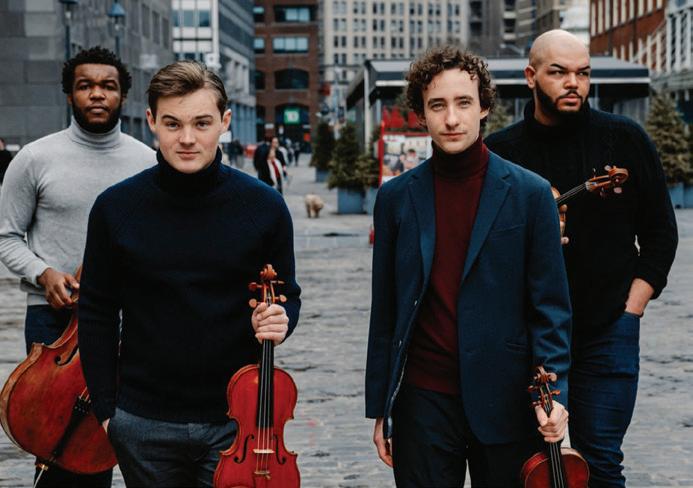
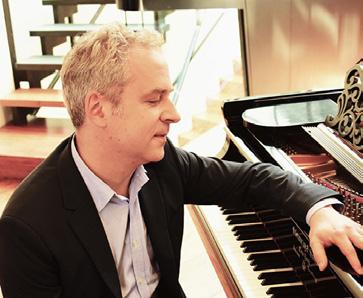
Isidore String Quartet with Pianist Jeremy Denk — Tuesday, March 4: Stars-in-the-making, Isidore won the Banff International String Competition in 2022 and received the prestigious Avery Fischer Career Grant in 2023. They’ll be joined by Jeremy Denk — heralded by The New York Times as “a pianist you want to hear no matter what he performs.”
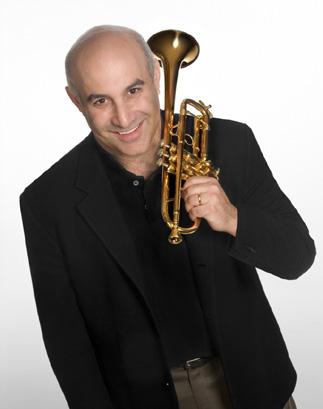
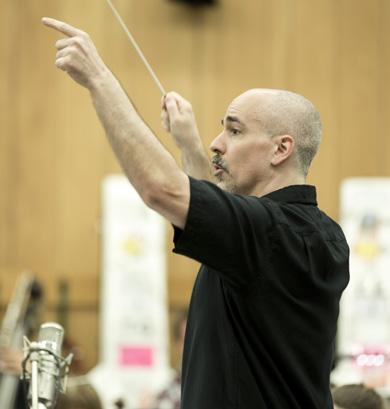
Brass & Percussion of The Cleveland Orchestra: Celebrating Akron’s Bicentennial — Tuesday, April 22: We’re celebrating Akron with a new fanfare! Tuesday Musical’s Myers New Music Fund has commissioned internationally acclaimed composer Peter Boyer to create and conduct the world premiere of Festive Fanfare (For Akron’s Bicentennial) as a highlight of our Akron Bicentennial Concert — featuring the brass and percussion sections of the world-famous Cleveland Orchestra, led by TCO principal trumpet Michael Sachs.


On-site health services include top rated skilled nursing.




EJ Thomas Performing Arts Hall—The University of Akron Tuesday, March 4, 2025, at 7:30 p.m.
Adrian Steele, violin (first on Ravel and Brahms) Devin Moore, viola
Phoenix Avalon, violin (first on Smith) Joshua McClendon, cello with Jeremy Denk, piano
String Quartet in F major (1903)
Maurice Ravel
Allegro moderato (tres doux) 1875-1937
Assez vif – (tres rythme) – Lent – Tempo 1
Tres lent
Vif et agite
Carrot Revolution for String Quartet (2015)
Gabriella Smith b. 1991
Commissioned by the Barnes Foundation for the Order of Things and by the Curtis Institute of Music for Curtis on Tour and written for the Aizuri Quartet
Quintet for Piano and Strings in F minor, Op. 34
Johannes Brahms Allegro non troppo 1833-1897
Andante, un poco Adagio
Scherzo (Allegro)
Finale (Poco sostenuto – Allegro non troppo – Presto non troppo)
Jeremy Denk, piano
On stage this evening is Tuesday Musical’s Three Graces Steinway D Piano.
The Isidore String Quartet appears by arrangement with David Rowe Artists. davidroweartists.com
Jeremy Denk appears by arrangement with Opus 3 Artists. opus3artists.com
Among Tuesday Musical’s generous season supporters:
Lisle M. Buckingham Endowment Fund of Akron Community Foundation, Kenneth L. Calhoun Charitable Trust, KeyBank Trustee, Mary and Dr. George L. Demetros Charitable Trust, Gertrude F. Orr Trust Advised Fund of Akron Community Foundation, Charles E. and Mabel M. Ritchie Memorial Foundation, Helen S. Robertson Fund of Akron Community Foundation, Sisler McFawn Foundation, Lloyd L. and Louise K. Smith Foundation, Welty Family Foundation








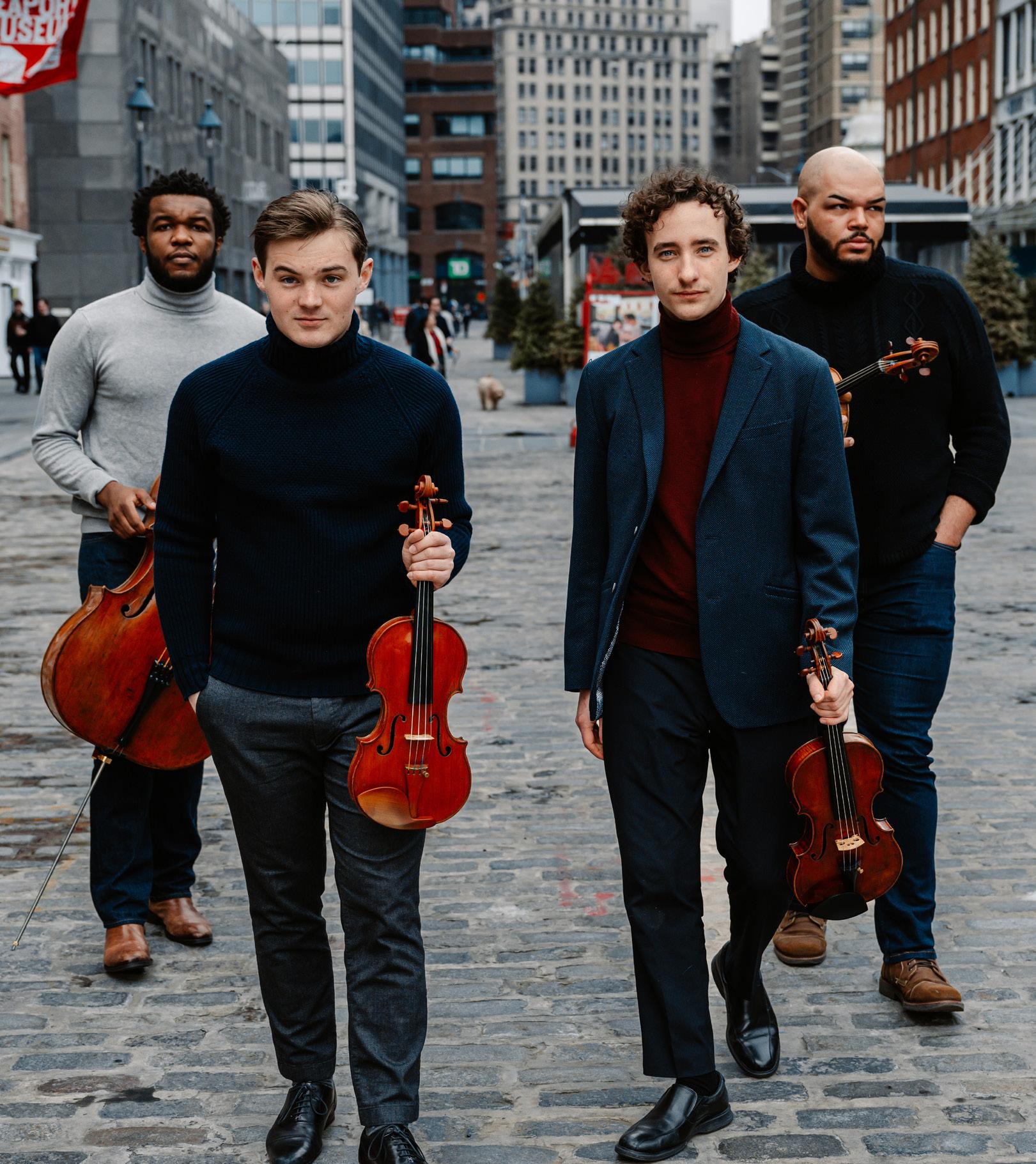
Adrian Steele and Phoenix Avalon, violins Devin Moore, viola Joshua McClendon, cello
Winners of an Avery Fisher Career Grant in 2023 and the 14th Banff International String Quartet Competition in 2022, the New York Citybased Isidore String Quartet was formed in 2019 with a vision to revisit, rediscover, and reinvigorate the repertory. The quartet is heavily influenced by the Juilliard String Quartet and the idea of “approaching the established as if it were brand new, and the new as if it were firmly established.”
The quartet began as an ensemble at the Juilliard School and has coached with Joel Krosnick, Joseph Lin, Astrid Schween, Laurie Smukler, Joseph Kalichstein, Roger Tapping, Misha Amory, and numerous others. They recently completed their final year as Peak Fellowship Ensemble-in-Residence at Southern Methodist University in Dallas.
In North America, the Isidore Quartet has appeared on major series in Boston, New York, Berkeley, Chicago, Ann Arbor, Pittsburgh, Seattle, Durham, Washington DC, Houston, Toronto, and Montreal, and has collaborated with several eminent

“A polished sonority and well-balanced, tightly synchronized ensemble with nearly faultless intonation....it is heartening to know that chamber music is in good hands with such gifted young ensembles as the Isidore Quartet.”
performers including James Ehnes, Jeremy Denk, Shai Wosner, and Jon Nakamatsu. Their current season includes performances in Salt Lake City, Buffalo, Kansas City, Portland (OR), Louisville, New Orleans, Cincinnati, Memphis, Vancouver, San Francisco, Akron, and many other cities across the U.S. and Canada. In Europe they will appear at Amsterdam’s Concertgebouw and in Bonn (Beethoven Haus), Stuttgart, Cologne, and Dresden, among others.
Over the past several years, the quartet has developed a strong connection to the works of composer and pianist Billy Childs. His String Quartet No. 2 — Awakenings — was among the repertoire that delivered the Isidore their Banff victory; this season they will play Childs’ Quartet No. 3, Unrequited In the 2025-26 season, they will premiere a new Childs quartet written for them.
Both on stage and outside the concert hall, the Isidore Quartet is deeply invested in connecting with youth and elderly populations, and with marginalized communities who otherwise have limited access to high-quality live music performance. They approach music as a “playground” and attempt to break down barriers to encourage collaboration and creativity.
The name Isidore recognizes the ensemble’s musical connection to the Juilliard Quartet: One of that group’s early members was legendary violinist Isidore Cohen. Additionally, it acknowledges a shared affection for a certain libation...legend has it that a Greek monk named Isidore concocted the first genuine vodka recipe for the Grand Duchy of Moscow!
Proclaimed by The New York Times as “a pianist you want to hear no matter what he performs,” Jeremy Denk is one of America’s foremost pianists.
A New York Times bestselling author as well, Jeremy is the recipient of both the MacArthur ‘Genius’ Fellowship and the Avery Fisher Prize, and is a member of the American Academy of Arts and Sciences.
In this 2024-25 season, Jeremy continues his collaboration with longtime musical partners Joshua Bell and Steven Isserlis, with performances at the Tsindali Festival and Wigmore Hall, following on from his multiconcert artist residency at the Wigmore in 2023-24. He also returns to the Lammermuir Festival in multiple performances, including the complete Ives violin sonatas with Maria Wloszczowska and a solo recital featuring female composers from the past to the present day. He performs this same solo
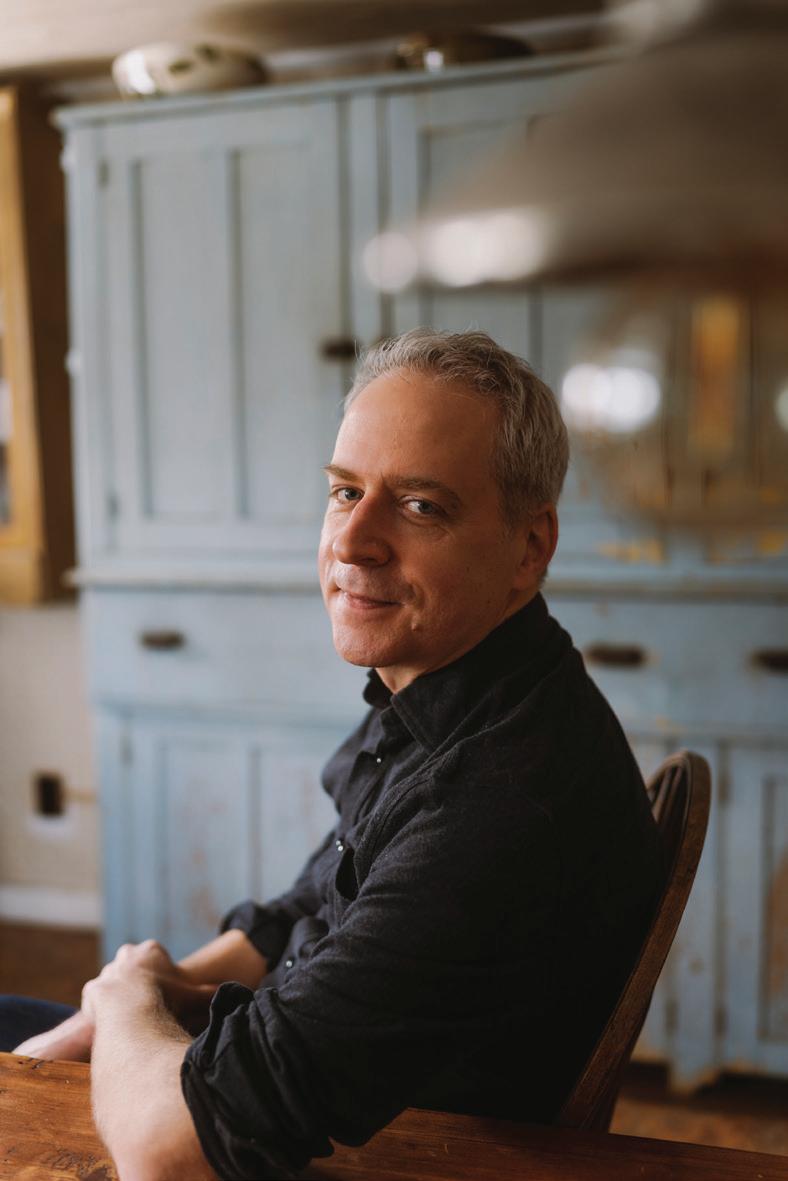


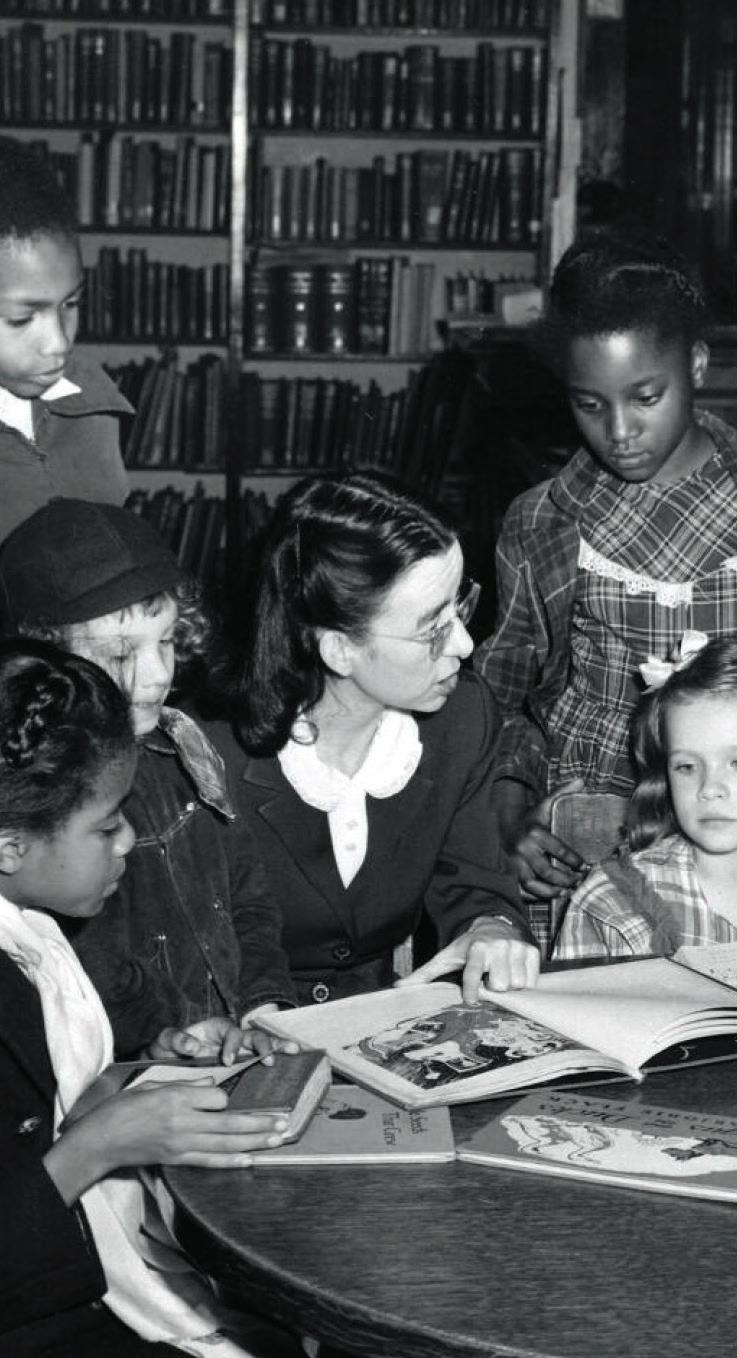
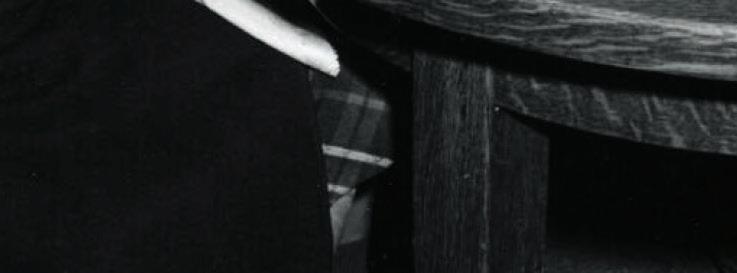

program on tour across the United States, as well as continuing his exploration of Bach in ongoing performances of the complete Partitas.
Jeremy is known for his interpretations of the music of American visionary Charles Ives. In celebration of the 150th anniversary of the composer’s birth, Nonesuch Records will release a collection of his Ives recordings later this year.
Highlights of Jeremy’s 2023-24 season included premiering a new concerto written for him by Anna Clyne, co-commissioned and performed by the Dallas Symphony led by Fabio Luisi, the City of Birmingham Symphony led by Kazuki Yamada, and the New Jersey Symphony led by Markus Stenz. He also reunited with Krzysztof Urbański to perform with the Antwerp Symphony, and with the Danish String Quartet for their festival Series of Four.
Jeremy has performed frequently at Carnegie Hall, and in recent years has worked with such orchestras as Chicago Symphony, Cleveland Orchestra, New York Philharmonic, and San Francisco Symphony. Meanwhile, he has performed multiple times at the BBC Proms and Klavierfestival Ruhr, and appeared in such halls as the Köln Philharmonie, Concertgebouw in Amsterdam, and Boulez Saal in Berlin. He has also performed extensively across the United Kingdom, including recently with the London Philharmonic, Bournemouth Symphony, City of Birmingham Symphony, Royal Liverpool Philharmonic, BBC Symphony, and Scottish Chamber Orchestra.
He is also known for his original and insightful writing on music, which Alex Ross praises for its “arresting sensitivity and wit.” His New York Times bestselling memoir — Every Good Boy Does Fine — was published to wide acclaim by Random House in 2022.
His latest album of Mozart piano concertos was deemed “urgent and essential” by BBC Radio 3, while his recording of the Goldberg Variations reached No. 1 on the Billboard Classical Charts.



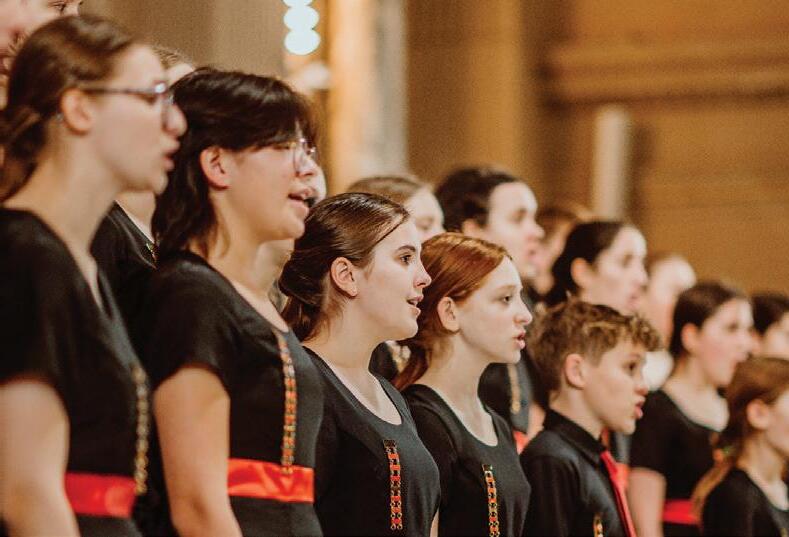
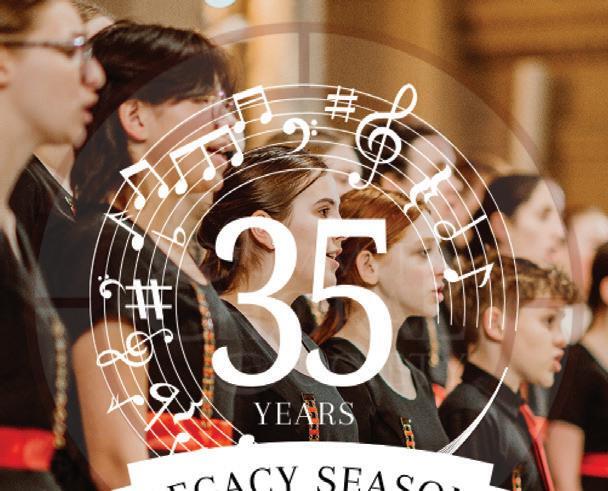
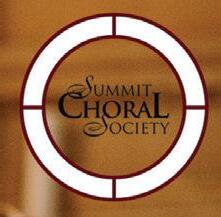
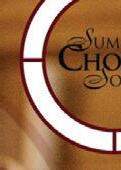
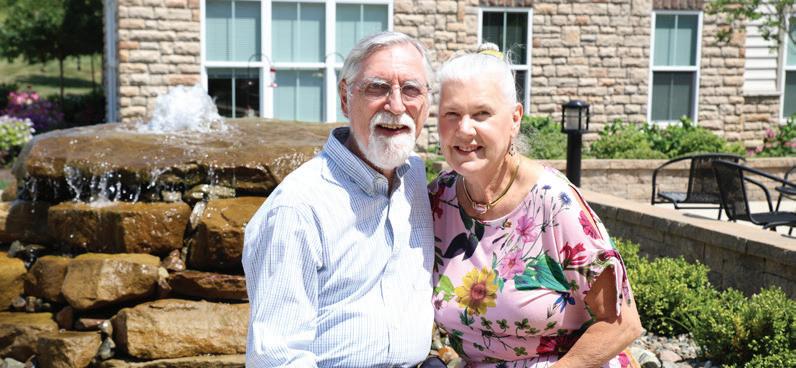

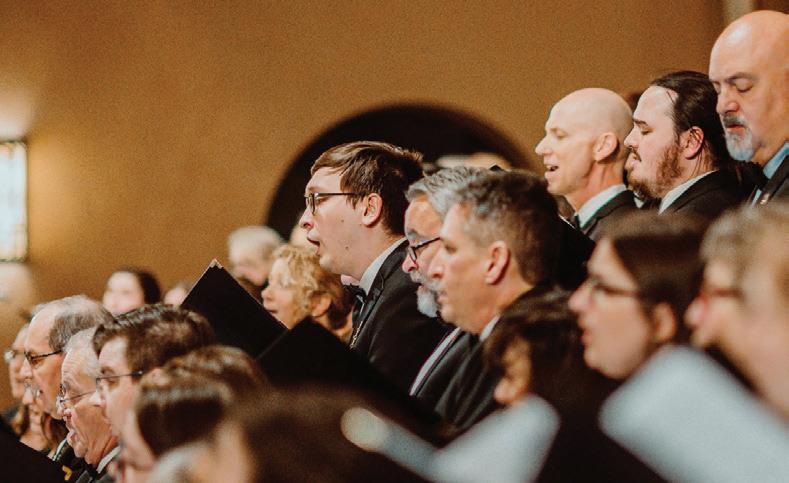




By the time Maurice Ravel (1875-1937) composed his String Quartet (1903), the genre had a well-trodden 150-year history. It was the era of modernism, when many composers were a little sick of the traditional forms, and there were many attempts to find methods of artistic expression outside of this tradition.
With his String Quartet, Ravel proved that aspects of modernism — the complex harmony, the vibrant orchestration, the off-kilter rhythmic gestures — could quite naturally be applied to traditional forms and could enrich tradition in the process.
The quartet’s sound is especially modern in its rejection of Romantic self-seriousness, a tradition at least nominally, though perhaps not fairly, aligned with the work of Beethoven, whom Ravel did not like (he found him bewildering).
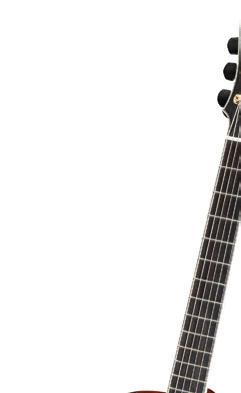
Ravel created work that was elegantly beautiful above all. His music is dandyish, with sheen and artifice and prettiness that never pretends to cultivate a verismo aesthetic or extra-musical political sentiment. It is music for pleasure’s sake, and it is in the very serious tradition of Haydn, Mozart, Mendelssohn and other committed classicists in that regard. Ravel does borrow some of Beethovinian technique here. Material in the piece is economical to the extreme, derived from only a handful of similarly structured motifs. Ravel, however, is not an essentialist like Beethoven, who seemed to find joy in the directness of laying his compositional choices bare. The material in this quartet is not itself the point, but rather an excuse
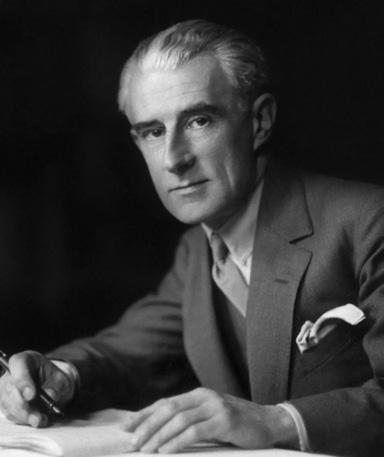



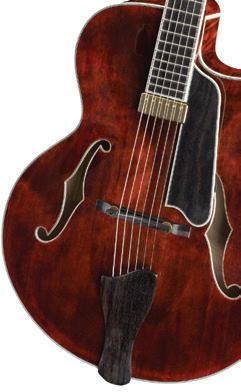
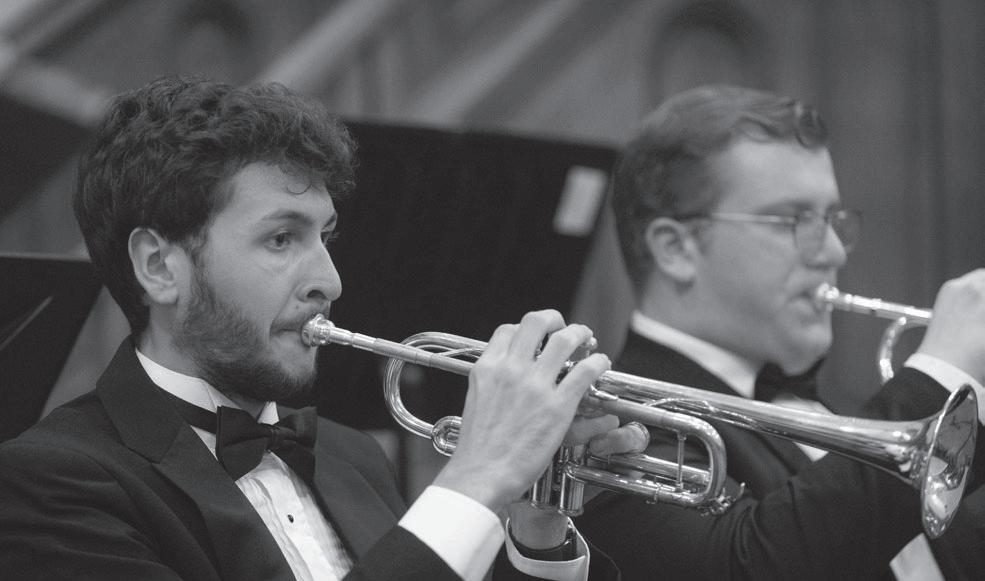





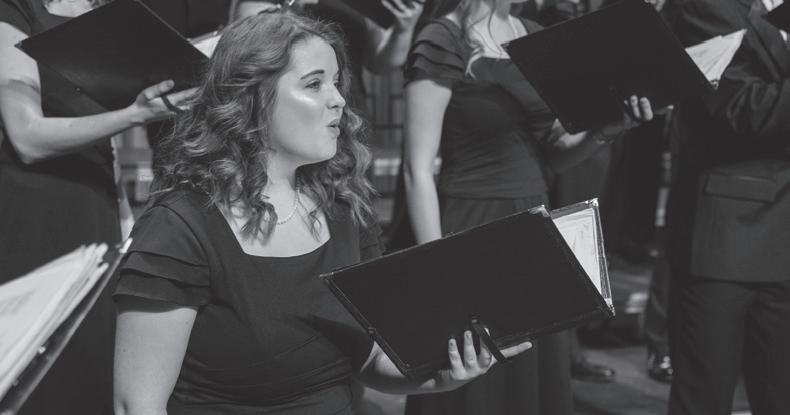

to explore texture. The surface, what the audience hears and takes pleasure in, is primary.
From the start it is apparent that Ravel is not interested in the development of microscopic germ motifs. He is instead giving a long-form theme that will provide small bits of material for the rest of the piece. The entire quartet participates in its ceremonial announcement, each instrument independent but supportive, rising and falling as the first violin does. This ascent and descent itself becomes an important motif, giving Ravel a precedent for a certain kind of color variation. Soon after the first explorations into the main theme, a new theme emerges, played in octaves between the violin and viola. It is reminiscent of the first theme, especially in its main motif’s direction — the first phrase down, then right back up — but it serves as counterpoint to rather than variation of the opening statement. The first phrase of this theme will often be repeated in the piece, especially
CONCERTS IN FINNEY CHAPEL
ALL CONCERTS IN FINNEY CHAPEL

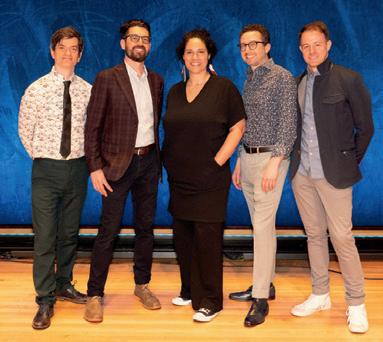
along with the beginning phrase of the first theme.
Ravel’s love of strict form is evident especially in the first movement. It is in traditional sonata allegro form (theme statement — development — recap), the default of the previous 150 years. It was historically typical for composers to introduce primary thematic material in these opening movements, and Ravel does that here, but his movement is stuffed with such a variety of textures — the pizzicato, the heavy tremolo, the Mozartean lyrical section — that it feels like it is foreshadowing more than establishing. It is almost like an overture to a musical.
The second movement scherzo begins pizzicato with a theme that is essentially a variation of the first movement’s second theme, though its motion, again, is reminiscent of the first theme as well. Another variation, played bowed, occurs soon after, and each are explored
Martha Redbone Roots Project
Martha Redbone Roots Project
Martha Redbone and her ensemble blend the sounds of her coal country roots in Harlan County, KY, with folk, blues, and gospel from the ancestors of the Black migration, mixed with the Indigenous heritage
Sunday, April 6 | 7:30 p.m.
Martha Redbone and her ensemble blend the sounds of her coal country roots in Harlan County, KY, with folk, blues, and gospel from the ancestors of the Black migration, mixed with the Indigenous heritage Sunday, April 6 | 7:30 p.m.
Martha Redbone and her ensemble blend the sounds of her coal country roots in Harlan County, KY, with folk, blues, and gospel from the ancestors of the Black migration, mixed with the Indigenous heritage Sunday, April 6 | 7:30 p.m.
Third Coast Percussion with Jessie Montgomery, violinist and composer
Third Coast Percussion with Jessie Montgomery, violinist and composer
Third Coast Percussion with Jessie Montgomery, violinist and composer
The GRAMMY-winning percussion quartet are joined by GRAMMY-winning composer and acclaimed violinist Jessie Montgomery in a program of works by Lou Harrison, Tigran Hamasyan, Jlin, Philip Glass, and Montgomery Wednesday, April 30 | 7:30 p.m.
The GRAMMY-winning percussion quartet are joined by GRAMMY-winning composer and acclaimed violinist Jessie Montgomery in a program of works by Lou Harrison, Tigran Hamasyan, Jlin, Philip Glass, and Montgomery. Wednesday, April 30 | 7:30 p.m.
The GRAMMY-winning percussion quartet are joined by GRAMMY-winning composer and acclaimed violinist Jessie Montgomery in a program of works by Lou Harrison, Tigran Hamasyan, Jlin, Philip Glass, and Montgomery. Wednesday, April 30 | 7:30 p.m.

thoroughly, often together as melodic and textural counterpoint, until the puttering dissipates and the cello ushers the quartet toward a slow, drawn-out section, the primary theme of which is partially an upside-down version of this movement’s first motif. A short restatement of the first theme, introduced again by solo cello, concludes the movement.
The third movement is effectively a reverse of the first movement, with a slow, patient introduction and theme and a faster but still lyrical B section that gradually tapers back to its tres lent pace. The breadth of the movement is Mozartean, with a seemingly unbroken, extravagantly elegant melody that is passed freely between instruments. The thematic material is primarily a recap of first movement motifs.
The fourth movement is a brusque restatement of all former themes. The constant barrage of tremolo hinted at in the first movement becomes the primary driver of this movement’s intensity. It is a virtuosic showcase of the textural capabilities of a string quartet, accomplished often by pairing of instruments with opposing but mutually reinforcing techniques. It is a movement that propels with its restlessness, until all that’s left is for it to stop, suddenly, triumphantly.
— Connor Buckley
Gabriella Smith
String Quartet

I wrote Carrot Revolution in 2015 for my friends the Aizuri Quartet. It was commissioned by the Barnes Foundation in Philadelphia for their exhibition The Order of Things, in which they commissioned three visual artists and myself to respond to Dr. Barnes’ distinctive “ensembles,” the unique ways in which he arranged his acquired paintings along with metal objects, furniture, and pottery, juxtaposing them in ways that bring out their similarities and differences in shape, color, and texture.
While walking around the Barnes, looking for inspiration for this string quartet, I suddenly remembered a Cézanne quote I’d heard years ago (though which I later learned was misattributed to him): “The day will come when a single, freshly observed carrot will start a revolution.” And I knew immediately that my piece would be called Carrot Revolution
I envisioned the piece as a celebration of that spirit of fresh observation and of new ways of looking at old things, such as the string quartet — a 250-year-old genre — as well as some of my even older musical influences (Bach, Perotin, Gregorian chant, Georgian folk songs, and Celtic fiddle tunes).

The piece is a patchwork of my wildly contrasting influences and is full of weird, unexpected juxtapositions and intersecting planes of sound, inspired by the way Barnes’ ensembles show old works in new contexts and draw connections between things we don’t think of as being related.
Gabriella Smith
The Quintet for Piano and Strings, Op. 34 is the climactic composition of the young Brahms; it is one of his very greatest works, yet one that only arrived at its final form with great difficulty. In his early career, Brahms’s general practice was to compose a work complete to the last detail, and then, turning severe self-critic, make a final decision about whether to allow it to be performed or to reject it completely, perhaps because he felt his work needed greater self-discipline. Also, he was often reluctant to launch compositions that he knew would be compared to those of Beethoven and other great masters; therefore, much of the music he wrote he subsequently destroyed.
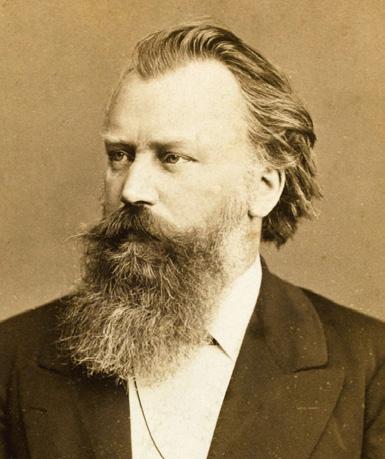
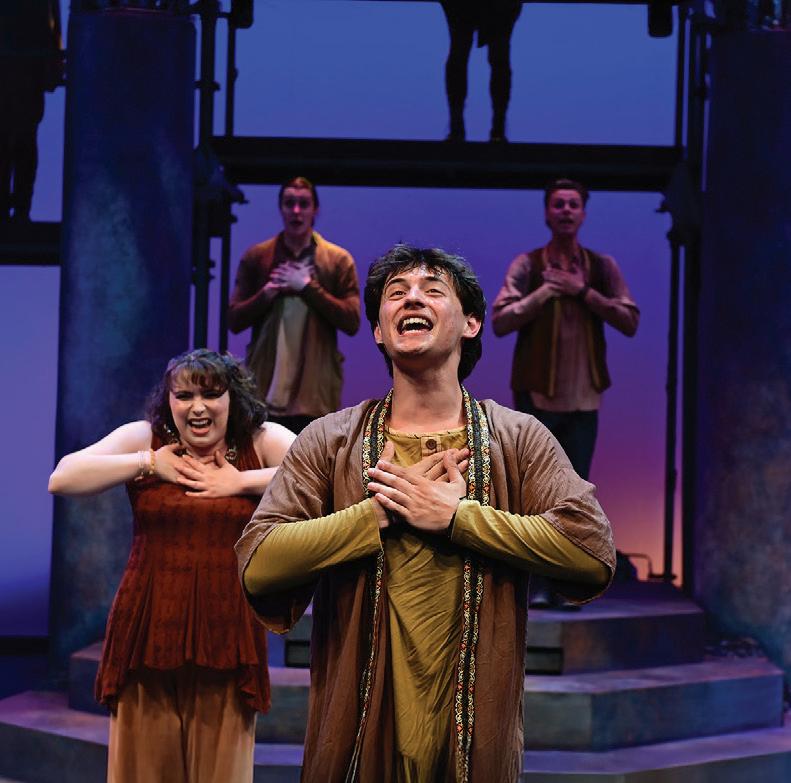
The pieces that do survive were often created in configurations that others had not used so extensively to avoid the possibility of direct comparison. For example, he wrote string sextets and piano quartets rather than string quartets, and he made sure that these were mostly note-perfect in their original manuscripts, with but a few important exceptions. The history of the changes in the present work is somewhat different from those of the other works, because this time, Brahms tried out the instrumentation with varying instrumental combinations without really altering the music itself.
























June 13–28
Director: Terri J. Kent
Choreographer: Martiń Ceśpedes
Music Director: Jennifer Korecki Based on Sholem Aleichem stories by special permission of ARNOLD PERL Book by JOSEPH STEIN
You’re a Good Man, Charlie Brown
July 4–12
Director & Choreographer: Amy Fristche
Music Director: Jonathan Swoboda
July 18–Aug. 3
Director: Terri J. Kent
Choreographer: Martiń Ceśpedes
Jennifer Korecki
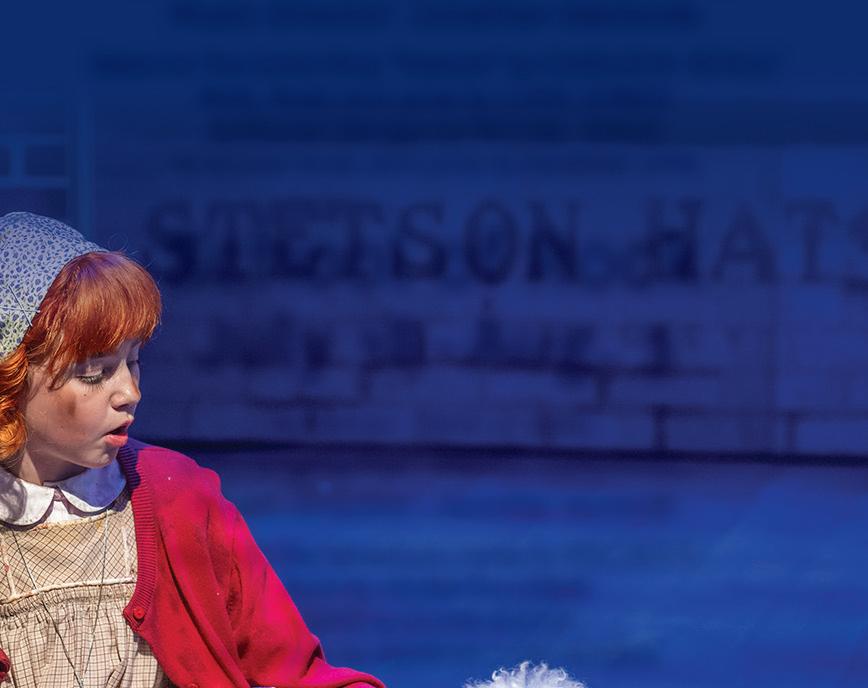
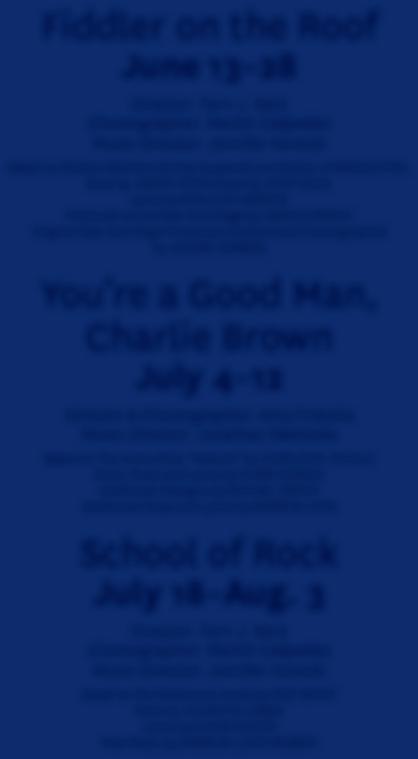




The Quintet for Piano and Strings made its first appearance in 1861 as a string quintet in F minor with two cellos. The most memorable work written for this combination is Schubert’s majestic Quintet in C Major, Op. 163 (D. 956), composed in 1828, but unknown until 1850 and first published in 1853. Brahms sent the first three movements of his work, even before he had completed the quintet, to Clara Schumann, herself a pianist and the composer Robert Schumann’s wife, to ask her to judge it.
As soon as he completed it, he sent it to the violinist Joseph Joachim for the same purpose. Joachim arranged for the quintet to be played in May 1863, and he subsequently told Brahms that the strings could not effectively convey the power and range of some of the music without some additional instrumental help. The content was simply too rich and too forceful for the strings to express, he said, although the
musical quality was fine. Seeking a more dynamic medium for his work, Brahms responded by converting it into a sonata for two pianos.
Clara Schumann and Anton Rubinstein played the piece in this form at Baden-Baden, and later she performed it with Brahms for Princess Anne of Hesse. Unfortunately, though, at this point, the form was still not right, and when Brahms and Carl Tausig played it at a concert of Brahms’ works in Vienna in April 1864 it was the only work on the program that the audience did not seem to like. Echoing in kind Joachim’s earlier comment about the quality of the sound of the strings alone, Clara Schumann ultimately felt that the music demanded more variety in sound than the two pianos could provide and suggested that Brahms convert the work into an orchestral piece. By the end of the year, Brahms had instead combined piano and strings to create the Piano Quintet, Op.


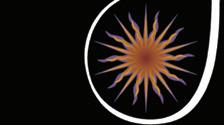
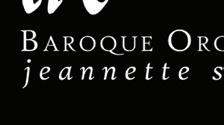

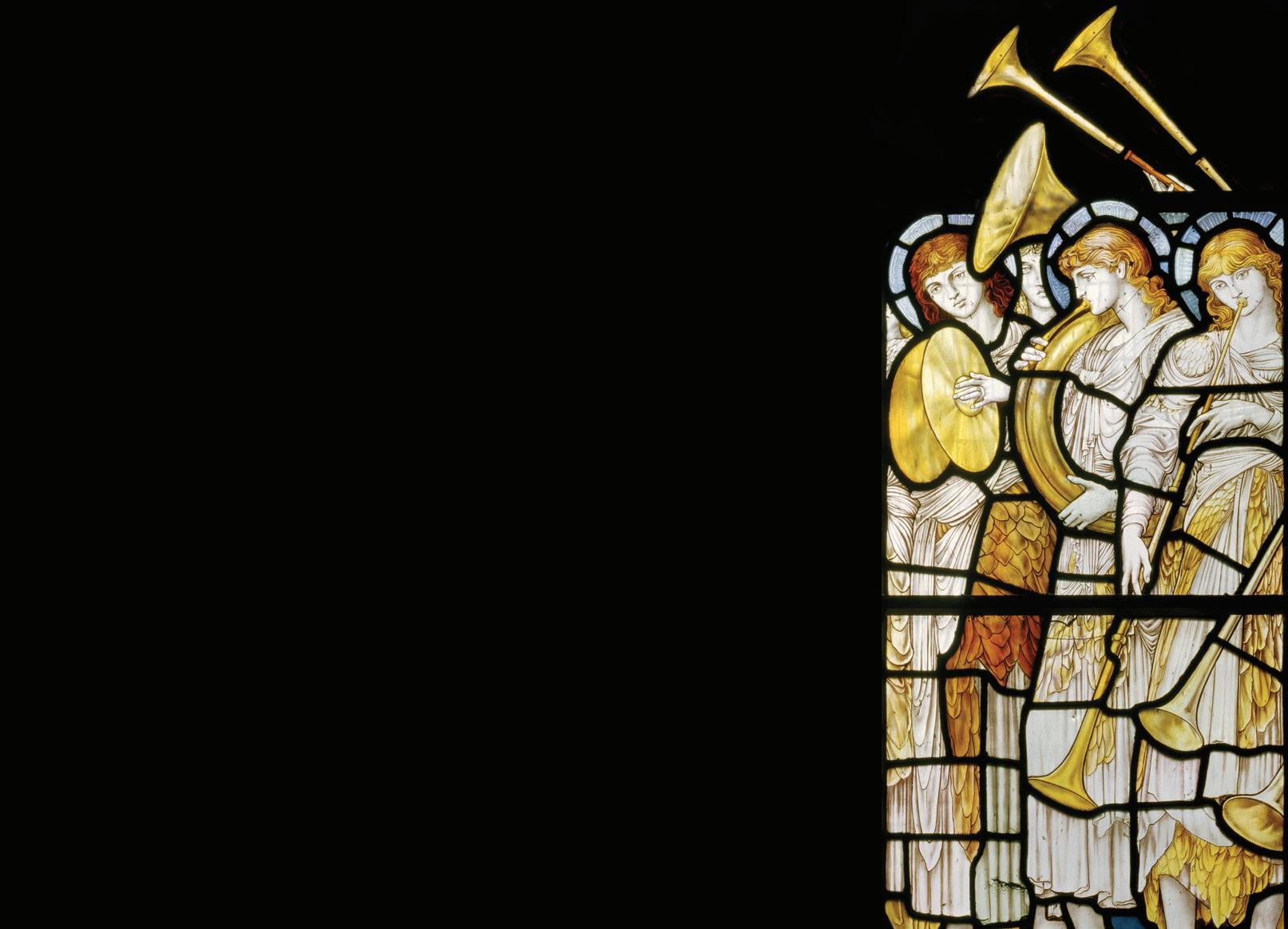
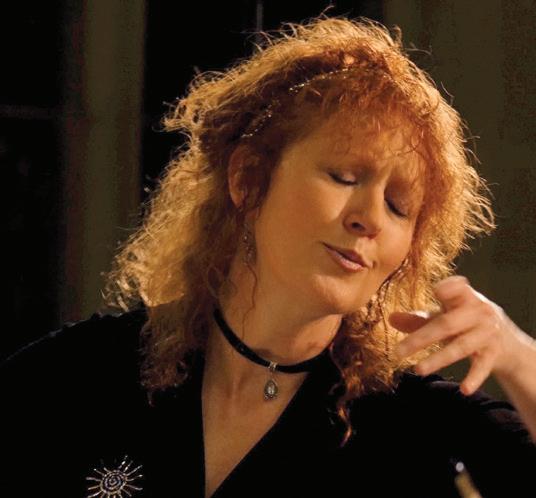

34. His original version for strings no longer exists, but Brahms published the Sonata for Two Pianos in 1871 as Op. 34 bis.
As Princess Anna of Hesse had so liked the sonata, Brahms decided to dedicate it to her when it was finally published. She carefully checked with Clara Schumann to make sure that both published versions would bear her name and that she would have the first copies off the press. A letter of November 3, 1864 — signed “your old Clara” — tells Brahms: “The Princess was so pleased that I seized the opportunity to suggest a beautiful gift for you, and the moment was so well chosen that she then and there commanded me to buy it. You will understand the joy with which I did so when you see it.” The gift was indeed precious: the original manuscript of Mozart’s Symphony in G minor.
When Joachim saw the changes that Brahms had made, he was very impressed and declared that Brahms’s Piano Quintet was the greatest piece of chamber music written since Schubert’s death. The only other one that could have possibly approached it was Schumann’s quintet, written in 1842.
The opening movement of the Quintet, Allegro non troppo, is dramatic and of epic scale. It is based on several themes that have an unusually wide range of expression. They include the brooding, the dramatic, the exultant, and the lyrical. A solemn theme predominates, but there is also a plethora of subsidiary themes, each functioning importantly in the rich, dramatic structure. The simplest of the movements is the second, a serene and tender Andante, un poco adagio in a three-part song form, notable for its gentle, swaying piano melody with its restrained and rhythmic string accompaniment. The Scherzo, Allegro, is an exciting movement of substantial dimension and intense power, with an irresistible rhythmic drive based in part on material related to the first movement. The contrasting calm central trio section derives its themes, in turn, from the first part
of the strongly syncopated Scherzo. The syncopations and march-like rhythms return to close the movement.
The finale begins with a slow and mysterious introduction, Poco sostenuto, full of germinal ideas that bloom in the lively main section, Allegro non troppo. The material of this vibrant movement is subjected to further development in the coda, Presto non troppo, which leads to the powerful climax. — © Susan Halpern, 2024













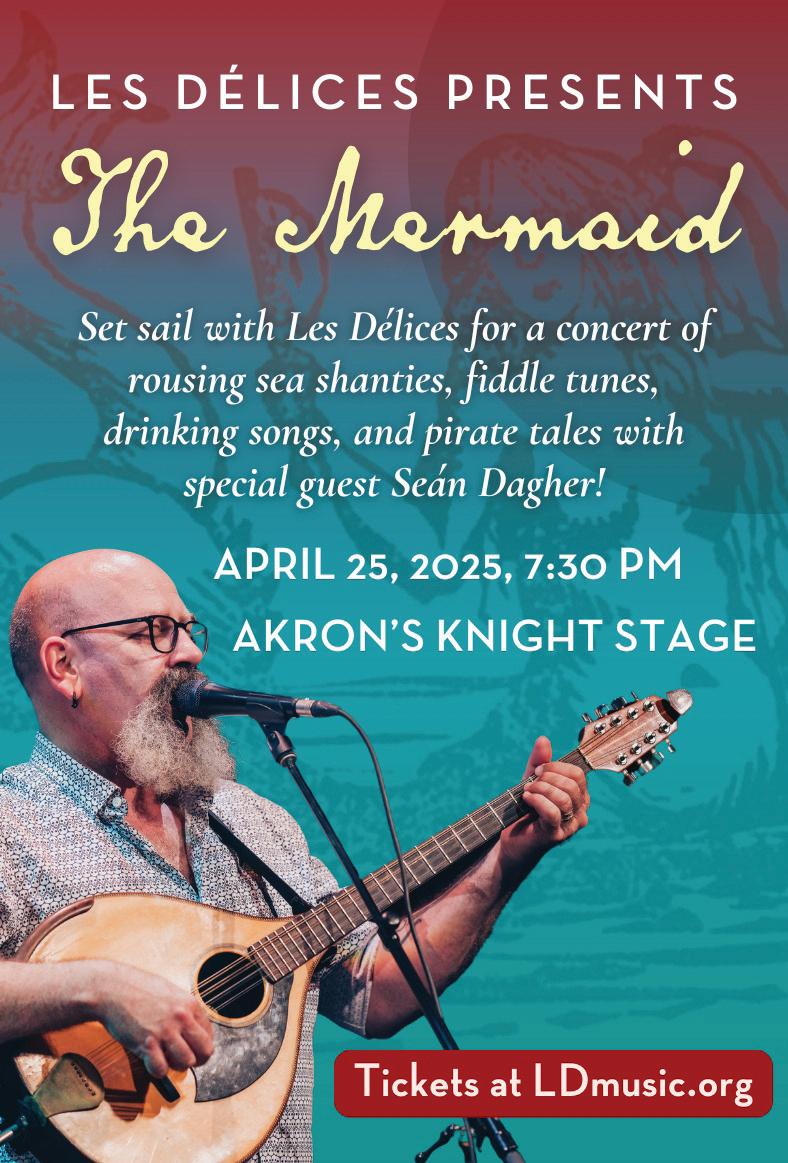


We gratefully acknowledge all donors this season. Thank you for helping Tuesday Musical continue to inspire current and future generations of music lovers. This list includes this season’s donors who have given at least $200 as of February 10, 2025.
Director $5,000+
Louis Elsaesser
Michael Frank
Linda and Paul Liesem
Cynthia Knight
Michael and Lori Mucha
George Pope
Bunnie & Jerome Sachs
Family Foundation
Kenneth Shafer
Tim and Jenny Smucker
Fred and Elizabeth Specht
Darwin Steele
James and Linda Venner
Benefactor $1,500 to $4,999
John and Kathleen Arther
Lee and Floy Barthel
Earl and Judy Baxtresser
Sally Childs
Judith Dimengo
Barbara Eaton
Bob and Beverley Fischer
Sharon and Robert Gandee
Elaine Guregian
Bruce Hagelin
DuWayne and Dorothy Hansen
Margaret and David Hunter
Michael Kaplan
Marianne Miller
Arlene Nettling
Claire and Mark Purdy
Richard and Alita Rogers
Patricia Sargent
Cynthia and Larry Snider
Nathan and Cecilia Speelman
Michael and Elizabeth Taipale
Kenneth and Martha Taylor
Sustainer $700 to $1,499
Richard and Eleanor Aron

James Bates
Ellen Botnick
Robert Carlyon
Thomas and Mary Lynn
Crowley
Karen Dorn
Paul and Jennifer Filon
Terry and Mary Kay Finn
Sue Gillman
Lloyd and Grace Goettler
Louise Harvey
Jim and Maureen Kovach
Dorothy Lepp
Stephen Myers
Dianne and Herb Newman
Roger and Sally Read
Peter and Nanette Ryerson
Jean Schooley
Richard Shirey and Jim
Helmuth
Sandra Smith
Jennifer and Jeffrey Stenroos
Carol Vandenberg
John Vander Kooi
Patron $400 to $699
Sophie and Steve Albrecht
Anonymous
David and Carmen Beasley
Linda Bunyan
Frank Comunale
Barbara and Denis Feld
Teresa and Ted Good
Ian Haberman
Barbara and Mark MacGregor
Anita Meeker
Charles and Elizabeth Nelson
Paula Rabinowitz
Roger F. Ream, DDS
John Schambach
Mickey Stefanik
Bruce Wilson
Shirley Workman
Donor $200 to $399
Beth and Ham Amer
Anonymous
Mark and Sandy Auburn
Guy and Debra Bordo
Judi and Jerry Brenner
Laurie Coyle
Roberta DePompei
Michael Dunn
Rick Elliott
Benjamin Flaker
Mark Greer
Michael T. Hayes
John & Suzanne Hetrick
David Hunt
Mary Ann Jackson
Karla and Mark Jenkins
Greer Kabb-Langkamp
William and Sally Manby
JoAnn Marcinkoski
Jim and Mary Messerly
Alan Mirkin
Judy Nicely
Jamie Wilding and Caroline Oltmanns
Pauline Persons
Anne Marie Schellin
Richard and Susan Schrop
Phil Schuchter
Betty and Joel Siegfried
James Simon
Joe Skubiak
Elinore Stormer
Marc and Julie Weagraff
Jorene Whitney
Susan Yingling
Carol and Bob Zollars

These generous donors have chosen to honor special people in meaningful ways. List as of February 10, 2025.
In Memory of Margaret Baxtresser
Floy and Lee Barthel
Earl and Judy Baxtresser
In Memory of Jaymi Blossom
Robin Blossom
In Honor of Bobbie Eaton
Judi and Jerry Brenner
Fred and Elizabeth Specht
In Memory of William Eaton
Doris St. Clair
In Honor of Austin and Richard Ferguson
David Hunt
In Honor of Bob and Beverley Fischer
Frank Comunale
In Memory of Mary Ann Griebling
Dorothy Lepp
In Memory of Joy Hagelin
The Hagelin and Wolf families
In Memory of Betty Howell
Nancy Bagwell
Bill Cervenik
Thomas and Barbara Cook
Sue and Ken Keller
Point Comfort Association
Tuesday Musical Staff
In Honor of Karla Jenkins and Cynthia Snider
Frank Comunale
In Memory of Martha Kelly Frank Comunale
In Memory of JoAnn Marcinkoski
Jennifer Altieri
Sally Ann Anderson
Bobbie Eaton
Terry M. Harsney
DuWayne and Dorothy Hansen
Cynthia Knight
Dorothy Lepp
Claudia, Brian, and Barbara
Simon
Jena and Kyle Wright
In Honor of Anita Meeker
Frank Comunale
In Memory of Lori Mirkin
Alan Mirkin
In Honor of Charles and Elizabeth Nelson
Frank Comunale
In Honor of George Pope
Fred and Elizabeth Specht
In Memory of Rosemary Reymann
Cynthia Knight
In Memory of Robert Roach
Majorie Donahue
In Memory of Dr. Bruce and Lola Rothmann
Elizabeth Rusnak
Mickey Stefanik
In Memory of their parents
Nathan and Cecilia Speelman
In Memory of Cindy Stefanik
Mickey Stefanik
In Memory of Dr. Kenneth Swanson
Mickey Stefanik
In Honor of Tuesday Musical’s staff
Barbara Eaton
Anita Meeker
In Memory of Virginia Wojno
Bob and Beverley Fischer
Shirley Workman











Through their vital support, these organizations help to sustain Tuesday Musical and the arts throughout our region. List as of February 10, 2025.
$25,000+
ArtsForward/ArtsNow
William Bingham Foundation
GAR Foundation
Hillier Family Foundation
John S. and James L. Knight Foundation
Ohio Arts Council
$10,000 to $24,999
Akron Community Foundation
Howard Atwood Family Fund of Akron Community Foundation
Mary S. and David C. Corbin Foundation
Mary and Dr. George L. Demetros Charitable Trust
Kulas Foundation
Gertrude F. Orr Trust Advised Fund of Akron Community Foundation
Peg’s Foundation
Charles E. and Mabel M. Ritchie Memorial Foundation
Lloyd L. and Louise K. Smith Foundation
$5,000 to $9,999
The Lisle M. Buckingham Endowment Fund of Akron Community Foundation
John A. McAlonan Fund of Akron Community Foundation
Polsky Fund of Akron Community Foundation
Helen S. Robertson Fund of Akron Community Foundation
Sisler McFawn Foundation
Welty Family Foundation
$1,000 to $4,999
Bath Community Fund
Kenneth L. Calhoun Charitable Trust, KeyBank, Trustee
C. Colmery Gibson Fund of Akron Community Foundation
KeyBank Foundation
Lehner Family Foundation
Beatrice K. McDowell Family Fund
W. Paul Mills and Thora J. Mills Memorial Foundation
Laura R. and Lucian Q. Moffitt Foundation
R. C. Musson and Katharine M. Musson
Charitable Foundation
Ohio Federation of Music Clubs
Synthomer Foundation
Business Partners
Tuesday Musical thanks these businesses for their financial support. As our partners, they are investing in the community where their customers, employees, and families live, learn and work.




Is your business interested in connecting with well-educated and sophisticated arts supporters and community leaders throughout Greater Akron and Northeast Ohio? To discuss options and opportunities, please contact Cynthia Snider, executive director of Tuesday Musical, at 330-7613460 or csnider@tuesdaymusical.org.


Executive Committee
President Claire Purdy
Vice President/President Elect James Wilding
Treasurer Paul Mucha
Secretary Sally Childs
Governance Committee Chair Linda Liesem
Committee Chairs
Artistic Planning Cynthia Snider
Brahms Allegro Jennifer Stenroos Development Louise Harvey
Finance Paul Mucha
Hospitality Bobbie Eaton
Membership Fred Specht
Member Programs Stanislav Golovin
Scholarship Co-Chairs Mark Greer, George Pope
Education Co-Chairs Teresa Good, Michele Monigold At-Large Members Theron Brown, Diane Klein, Bryan Meek, Marianne Miller, Landon Nyako, Marc Weagraff, Shirley Workman
Staff
Executive Director Cynthia Snider
Director of Finance and Audience Services Karla Jenkins
Director of Artistic Operations
and Educational Engagement Austin Ferguson
Marketing Consultants Brett Della Santina, Jim Sector
Social Media Assistant Amie Cajka
Program art direction by Live Publishing Co.